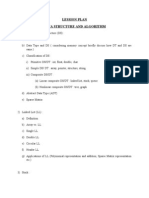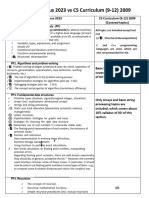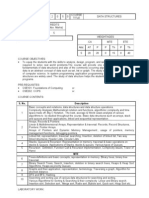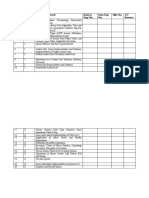0% found this document useful (0 votes)
25 views2 pagesDSA Notes Complete
The document provides an overview of various data structures and algorithms, including definitions, operations, types, and common problems associated with each. It covers Arrays, Strings, Linked Lists, Stacks & Queues, Binary Search, Trees, Graphs, Heaps, Dynamic Programming, Greedy algorithms, and Backtracking. Each section highlights key concepts and example problems relevant to the respective data structure or algorithm.
Uploaded by
allaripilla8968Copyright
© © All Rights Reserved
We take content rights seriously. If you suspect this is your content, claim it here.
Available Formats
Download as PDF, TXT or read online on Scribd
0% found this document useful (0 votes)
25 views2 pagesDSA Notes Complete
The document provides an overview of various data structures and algorithms, including definitions, operations, types, and common problems associated with each. It covers Arrays, Strings, Linked Lists, Stacks & Queues, Binary Search, Trees, Graphs, Heaps, Dynamic Programming, Greedy algorithms, and Backtracking. Each section highlights key concepts and example problems relevant to the respective data structure or algorithm.
Uploaded by
allaripilla8968Copyright
© © All Rights Reserved
We take content rights seriously. If you suspect this is your content, claim it here.
Available Formats
Download as PDF, TXT or read online on Scribd
/ 2























































































